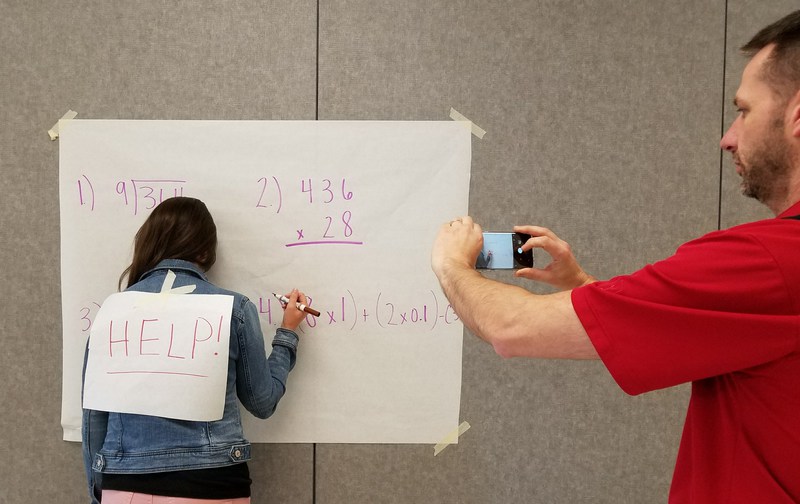
On Day 1 of the (C3)2 project’s 2017 Summer Institute, curriculum director Laura Reeder (below) wasted no time introducing one of the “big tasks” for the project’s final year. “The goal of (C3)2 is for you to own what you've done,” she said, addressing the project's Grades 4 and 5 classroom teachers, specialty teachers and teaching artists. “You must ask yourself: ‘How am I going to become confident with my creativity and continue to drive arts learning in my classroom? How will I do what I’ve been doing when the grant structure goes away?”
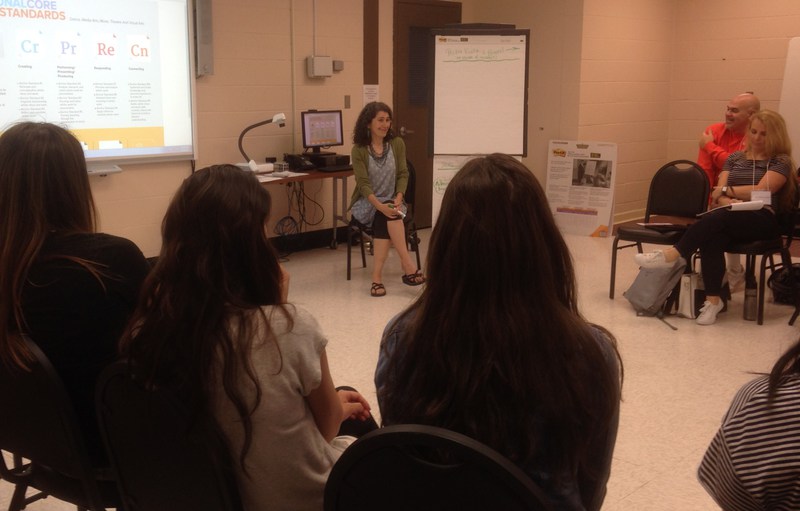
To help the educators answer these questions, Ms. Reeder, along with Loretta Corbisiero, project director, and Lorraine Sopp, project coordinator, prepared a three-day Summer Institute. The goals were to:
- Review what had been accomplished during the past two years. (Day 1)
- Rejuvenate the participants’ arts experience with a day-long museum visit. (Day 2)
- Teach cultural organizations and artists not involved with (C3)2 about the project. (Day 3)
After her welcoming remarks, Ms. Reeder asked the teachers to gather with their school teams to write a letter (below). “This letter can be addressed to your district administrators, school colleagues, students or the parents. What would you like to share with others about the project?”
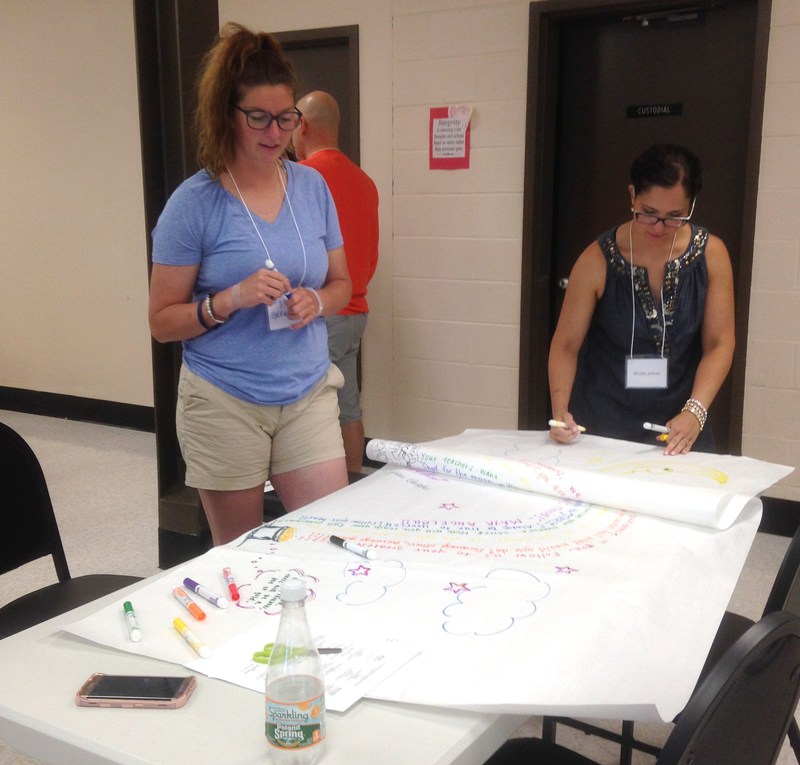
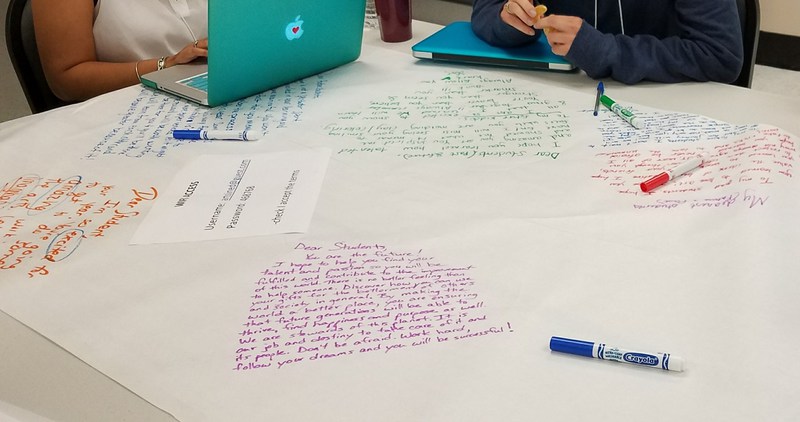
Once the letters were written, everyone gathered together and the teachers shared some of the thoughts and feelings expressed in their letters. Most educators wrote letters to their incoming students, giving them advice about their roles during the project’s Year Three. Their words of encouragement for incoming students included: “It’s alright to have fun while you learn;” “use your strengths, whatever they are;” “use your imagination;” “step out of your comfort zone;” “be a problem-solver,” “find your passion, your talents;” and “embrace your classmate’s differences.”
Next, Ms. Reeder asked the teachers what they needed to be more creative in the coming year. “We all could use more time and money to be creative,” she acknowledged. “But what are some of the other things that would help?” Teachers said they could use more:
- Support from the administration. “The administration needs to accept that art is important,” said one teacher. “Children love it and learn from it.” Inviting the administration to see what’s happening in the classroom was suggested.
- More resources. As a whole, the project teachers said they would like more materials and tutorials on arts integration.
- Curriculum development. “How do you find time to collaborate with other teachers in your school?” a teacher asked.
- Parental help to promote arts integration. “We could use training for our parents.”
The morning activities also included focus groups. Representatives from Metis, the research firm studying the impact of the (C3)2 project, met separately with the educators (below) and the teaching artists for guided discussions about Year 3.
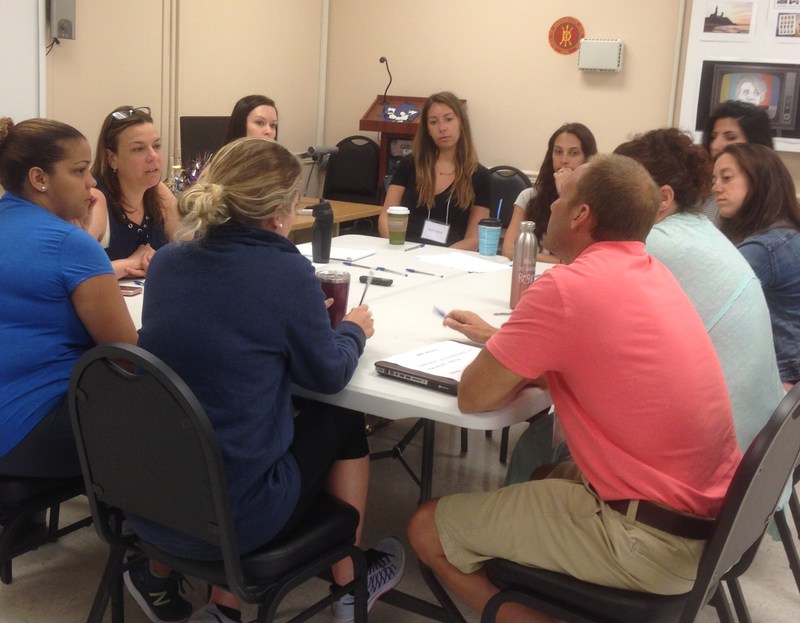
After lunch, the teachers and teaching artists were asked to create a presentation to tell others about the project. Before they went to work, Ms. Reeder showed the group two short videos. The first, Saturday Morning Gift by Bassel Shahade, is based on an interview with a child who survived the 2006 war on Lebanon. This somber portrait was followed by a video of a 12-year-old old singing ventriloquist auditioning for the of America’s Got Talent judges.
“Our work is about the seriousness as well as the joy of learning,” Ms. Reeder stressed. “We sometimes forget the power of our work when dealing with standards, assessments and so forth. We want people to understand what we are doing. How do we unpack that power and tell our story to strangers? What is this (C3)2 thing all about?” The group brainstormed a list of ideas (below) that they could use when creating their presentations.
| What is (C3)2?
Here are some of the words and phrases offered by educators and artists to described the (C3)2 project experience...
Arts Integration
Going beyond the Common Core to include social and human skills
Fun while learning
Stepping outside one's comfort zone
Support for diverse learning styles
Student work is essential in everything
No wrong answers, no worries
Arts enabling other learning
Research that shows stuff is happening
|
The school teams then prepared their presentations. Ms. Reeder encouraged the teams to be creative. One team took photos of themselves to illustrate learning struggles (photo at the top of this summary). Another team (below) created a PowerPoint to explain the journey their students during the (C3)2 project.
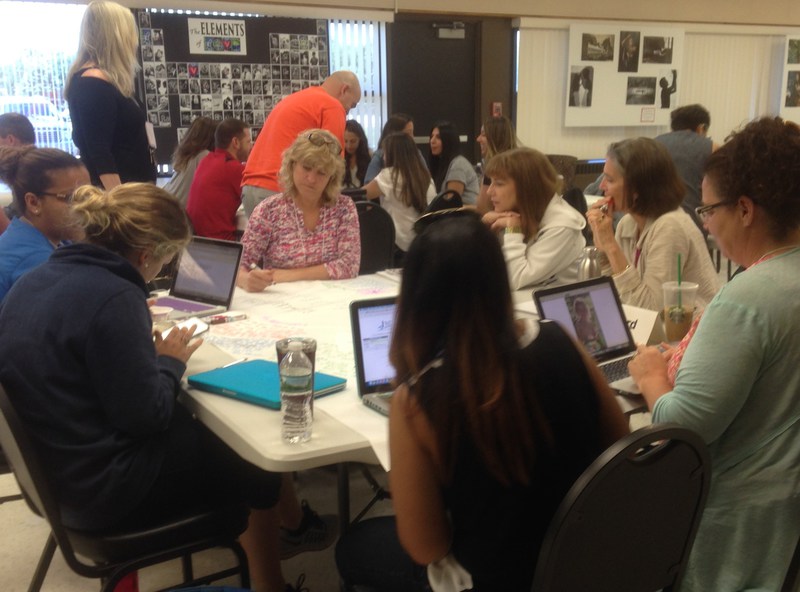
The educators created a “wordle” or “word clouds” from the important words in their letters (below) to use in the presentation.
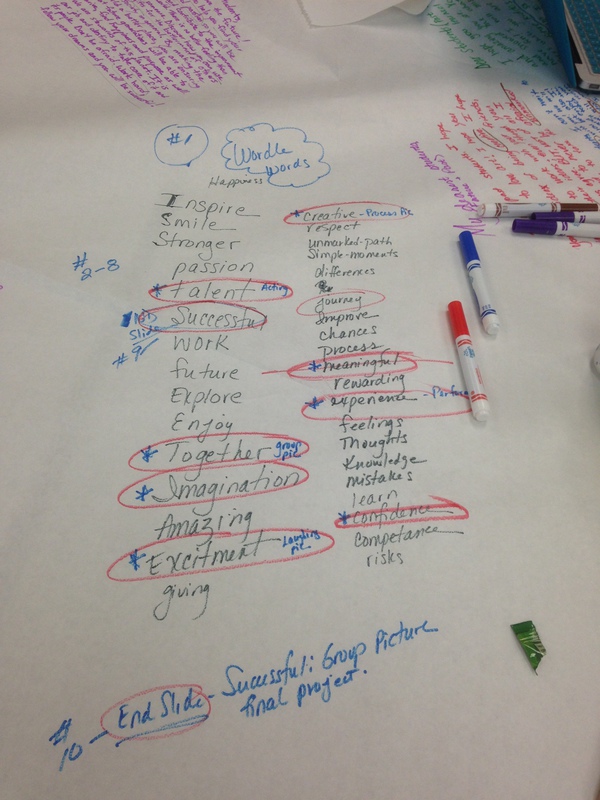
Another team (below) used lacrosse to illustrate learning through action with arts integration.
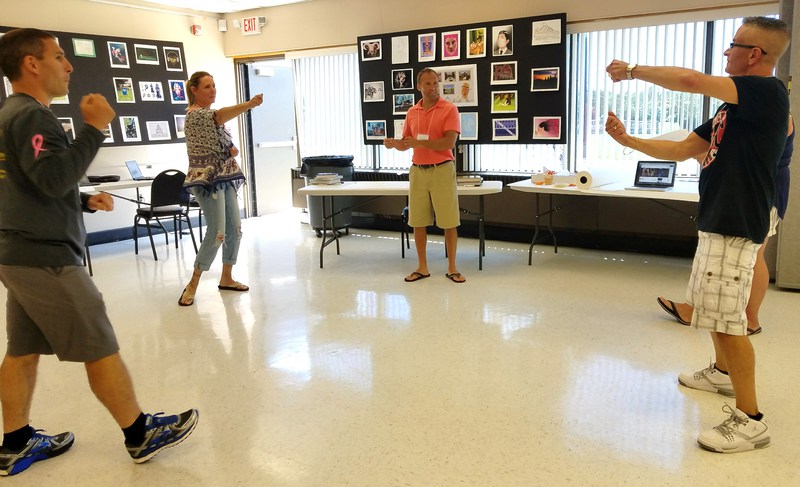
Afterwards, the school teams shared their presentations with the whole group. Ms. Reeder said she planned to have the educators present again on Day 3 of the Summer Institute, when outside cultural organizations and artists would be attending. “I want you to teach them about the project,” she explained. Videos of the presentations will be posted with the summary of Day 3. For now, you can take a peek at a PowerPoint presentation that illustrates students struggling before (C3)2 and their success through arts learning. Click HERE.
Ms. Reeder closed the day’s session by thanking participants for their hard work and creativity.